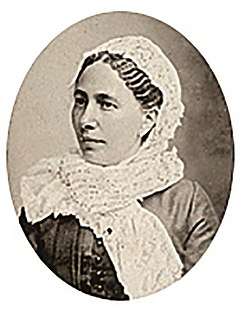Related Research Articles

Joan of Valois was a Countess consort of Hainaut, Holland, and Zeeland, by marriage to William I, Count of Hainaut. She acted as regent of Hainaut and Holland several times during the absence of her spouse, and she also acted as a political mediator.

Louise Juliana of Orange-Nassau was a countess consort of the Palatinate by marriage to Frederick IV, Elector Palatine, and took part in the regency government of her son between 1610 and 1614. She also acted as a mediator between the king of Sweden and the elector of Brandenburg in 1631.

Countess Elisabeth of Nassau was the second daughter of prince William of Orange and his third spouse Charlotte of Bourbon, and Duchess of Bouillon by marriage to Henri de La Tour d'Auvergne. She was the regent of Sedan during the absence of her spouse; between 1623 and 1626 during the minority of her son; and from 1632 during the absence of her son.

Countess Charlotte Brabantina of Nassau was the fifth daughter of William the Silent and his third spouse, Charlotte of Bourbon. She lived in her life at the French royal court and performed many successful assignments as a mediator.

Maria Johanna Kleine-Gartman was a Dutch stage actress and drama teacher.

Maria Francisca Bia known as Mimi Bia and as Mimi Engelman-Bia and Mimi de Vries-Bia was a Dutch ballet dancer, opera singer (soprano) and dramatic stage actress. Starting her career as a ballet dancer, she had a parallel career as both a soprano opera singer as well as a dramatic stage actress at the Amsterdamse Schouwburg, were she had a dominant role within the Dutch theatre world. She was the manager director and owner of the theatre Utrechtse Schouwburg in Utrecht in 1875-1880.
Anna Maria de Bruyn was a Dutch stage actress and ballet dancer.
Susanna van Lee was a Dutch stage actor and ballet dancer.
Jacomina de Witte was the central figure in a famous corruption case in the Netherlands in 1649.
Susanna du Plessis (1739–1795) was a plantation owner in Dutch Surinam. She is a legendary figure in the history of Surinam, where she has become a metaphor of a cruel and sadistic slave owner. She is the subject of songs, plays, fairy tales and legends as well as books.
Geertruid Adriaansdochter, was a Dutch farmer. She was hanged by Protestant farmers as a Catholic when she attempted to bring food to her brother, a Catholic priest in Amsterdam, who was at the point under siege by the Protestants. She was used in the propaganda during the war as a Catholic martyr.
Marretje Arents, known as Mat van den Nieuwendijk, and het limoenwijf, was a Dutch fishwife and rebellion leader, sentenced to death as one of the three instigators and leaders responsible for the so-called Pachter riots of 1748.

Princess Frederica Louise Wilhelmina of Orange-Nassau was a Hereditary Princess of Brunswick; married 14 October 1790 to Hereditary Prince Charles George August of Brunswick-Wolfenbüttel, son of Charles William Ferdinand, Duke of Brunswick-Wolfenbüttel. She was known in the family as "Loulou".

Madame Therese, also known as Madame Traese, was the professional name of a famous Dutch brothel keeper. She operated one of the largest and most famous brothels of her time in Amsterdam, with a reputed international list of powerful clients, and was often caricatured in the press. She is confirmed as active from 1706 until 1729.

Maria van Schooten (1555–1573) was a Dutch heroine from the Eighty Years' War. She died from the injuries she received after having participated in the defense during the Siege of Haarlem and was given a public funeral with full military honors. She is believed to have been one of the women led by Kenau Simonsdochter Hasselaer, a legendary heroine who helped defend Haarlem against the Spanish invaders.
Titia Brongersma was a Frisian poet of the late 17th century. Her book, De bron-swaan, was published in 1686 and is virtually the only trace of her literary activity. She also gained prominence for excavating a dolmen at Borger, Netherlands in 1685.

Karl Georg August, Hereditary Prince of Brunswick-Wolfenbüttel was the heir to the Duchy of Brunswick as the eldest son of Charles William Ferdinand, Duke of Brunswick-Wolfenbüttel and Princess Augusta of Great Britain.
Sophie Harmansdochter, also known as Gele Fye, was a Dutch woman who became notorious for informing on religious minorities, resulting in many deaths. She was eventually convicted of perjury, tortured and executed.

Jacoba Rauwerda (1835–1919) was a Dutch brothel manager. She was the owner and manager of the most famous brothel in 19th-century Amsterdam, the Maison Weinthal, between 1877 and 1902.
Catharina Petit (1660–1740) was a Dutch stage actor.
References
- ↑ Marijke Carasso-Cook, Korsendr, Angel. , I: Online Dictionary of Nederländerna. URL: http://resources.huygens.knaw.nl/vrouwenlexicon/lemmata/data/Korsendr%5B%5D. [ 2014/01/13 ]
- Marijke Carasso-Cook, Korsendr, Angel. , I: Online Dictionary of Nederländerna. URL: http://resources.huygens.knaw.nl/vrouwenlexicon/lemmata/data/Korsendr%5B%5D. [ 2014/01/13 ]
- B.J.M. de Bont, ‘Een oud-Amsterdamsch familieportret in het Koninklijk Museum te Berlijn’, Het Jaarboekje van Alberdingk Thijm. Almanak voor Nederlandsche Katholieken (1893) 149–188.
- Johan E. Elias, De vroedschap van Amsterdam 1578–1795, deel 1 (Amsterdam 1903; herdr. 1963) 67.
- J.F.M. Sterck, De Heilige Stede in de geschiedenis van Amsterdam (Hilversum 1938).
- H. van Nierop, ‘De eenheid verbroken 1522-1566’, in: Marijke Carasso-Kok red., Geschiedenis van Amsterdam, deel 1: Een stad uit het niets (Amsterdam 2004) 313–363, aldaar 326–328.